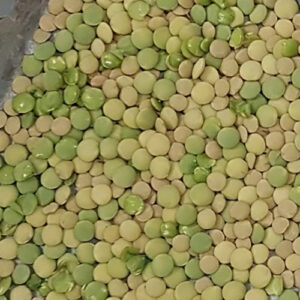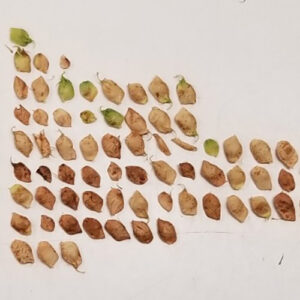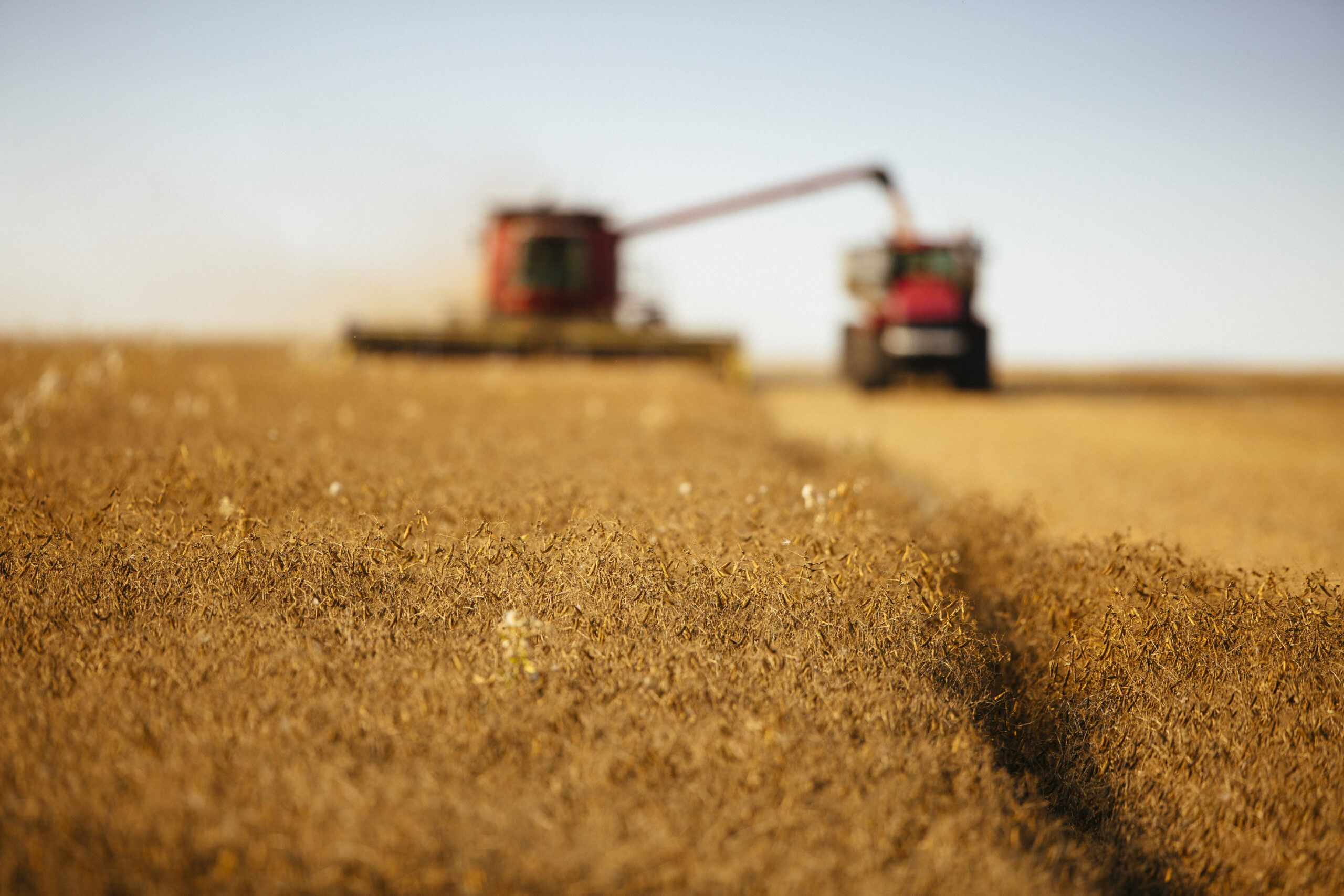Use this guide to help identify the lentil stage for proper application of pesticide products and harvest management strategies.
Lentil Growth Stages & Detailed Indicators
| Stage | Description | Details |
|---|---|---|
| R1 | Early bloom | One open flower at any node on 50% of the plants in the field |
| R2 | Full bloom | Flowers have opened on nodes 10-13 of the main branch on 50% of the plants in the field |
| R3 | Early pod | Pods on nodes 10-13 of the main branch are visible on 50% of plants in the field |
| R4 | Flat pod | Pods on nodes 10-13 of the main branch are flat; Seeds fill less than half of the pod area, but can be felt as a bump between the fingers |
| R5 | Full seed | Seeds in any single pod on nodes 10-13 of the branch are swollen and completely fill the pod cavity |
| R6 | Full pod | All the normal pods on nodes 10-13 of the main branch completely fill the pod cavity; Field remains green |
| R7 | Physiological maturity |
• Moisture content of 30% or below • 80% of the plant is yellow to brown in colour • Top of plant may still have slight green colour, but seeds fully formed and not juicy • Seeds in pods from the bottom third of the plant are tan-brown, hard, and pods rattle when shaken • Seeds from the middle third are full size and firm with 100% colour change (light green to tan-brown) • Seeds from the upper third have 50-75% colour change with no immature seeds (shiny green seeds) |
| R8 | Full maturity | 90% of the pods on the plant are tan-brown; Seed moisture ranges from 20-30% |
| Ready to harvest | All pods are tan-brown and seed moisture is less than 20% |



Lentil Growth Stages & Seed Moisture Content
| Seed Moisture Content | Field | Plant | Pods | Wet Seed |
|---|---|---|---|---|
| 60% |
 |
 |
Photo Unavailable |
 |
| 50% |
 |
 |
 |
 |
| 40% |
 |
 |
 |
 |
| 30% |
 |
 |
 |
 |
| 20% |
 |
 |
 |
 |
Large green lentils pictured above.
ONLY APPLY GLYPHOSATE WHEN LENTILS ARE AT LESS THAN 30% SEED MOISTURE.
This is what lentils look like at 30% moisture:



Seeds: The top of plants may still have a slight green colour but seeds are fully formed and not juicy.



Pods: At less than 30% lentil seed moisture, the pods on the top third of the plant will show a 50-75% colour change. Pods in the middle third of the plant are full-sized and firm, showing a 100% colour change from light green to tan-brown. Pods in the bottom third of the plant are tan-brown, hard, and rattle when shaken.
Plants: To determine if lentils are at 30% moisture, ensure that 80% of the plant is yellow to brown in colour. This applies to the entire field including the greenest part. If parts of the field are less mature, they should be avoided at application time or the field should be left to mature for a couple days.


The optimal stage to implement harvest management strategies is when the vast majority of seeds have reached physiological maturity. This occurs at 30% seed moisture content. To assess crop stage, walk along a transect through a representative field section and randomly sample pods from the entire canopy (bottom to the top of plants). A minimum of 50 pods should be sampled. Seed should then be shelled from the pods and the representative seed sample assessed.
For all harvest management strategies (desiccation, pre-harvest glyphosate, swathing) timing is critical for maximizing yield, minimizing quality concerns, and ensuring grain is marketable. Assessing seed maturation in an indeterminate crop like lentil is challenging. Immature seeds are generally in the top third of the canopy and can be much more immature than those in the lower canopy.
To determine if lentils are at 30% moisture, ensure that 80% of the plant is yellow to brown in colour. This applies to the entire field including the greenest part. If parts of the field are less mature, they should be avoided at application time or the field should be left to mature for a couple days.
Impacts on Seed Quality


Seed quality is reduced if plants are terminated early (prior to physiological maturity), as illustrated by poor seed quality in photo on left (terminated at 50% moisture content).
Thank you to Seungbum Steve Ryu, Research Technician with Dr. Steve Shirtliffe, Department of Plant Sciences, College of Agriculture and Bioresources at the University Saskatchewan, for many of the photos used in this staging guide.






